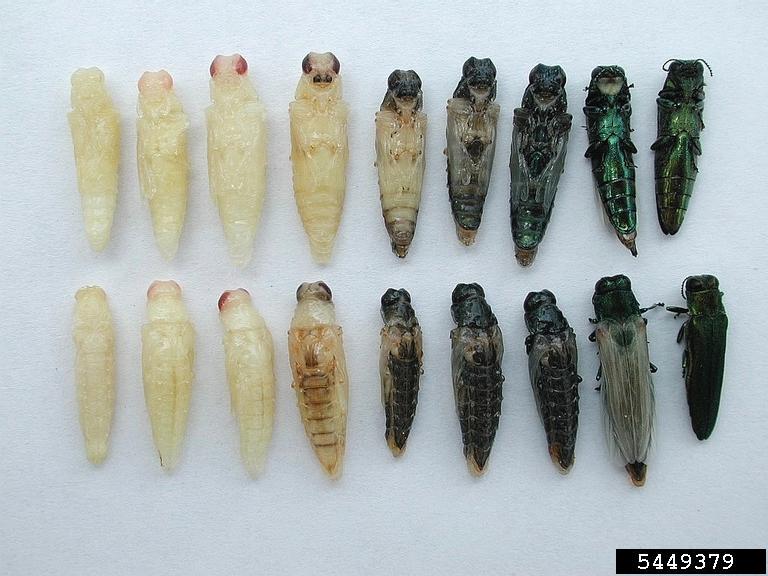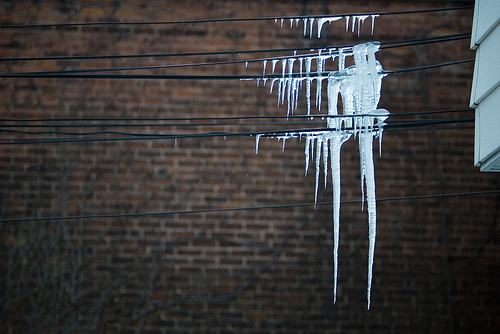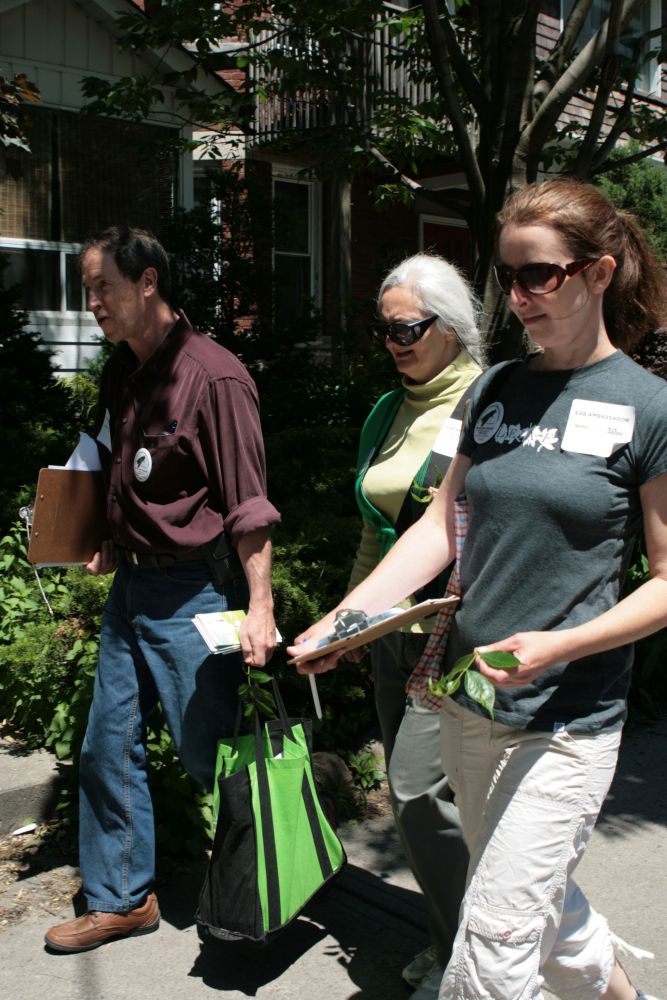1. How do I know if ash trees in my area are infested with EAB?
First you need to be able to identify an ash tree. We have some great resources on our website including some short videos that can help you figure out if that’s an ash out in front of your home (if you don’t already know). It’s very difficult to detect EAB infestation in the early stages. At later stages you will notice larval galleries just under the bark (S-shaped grooves in the tissue), small D-shaped exit holes (three to four millimetres wide) and die back (or thinning branches) in the crown of the tree. At this point, if you live in Toronto or York Region, you should assume your ash trees are infected.
2. How does EAB survive the winter?
EAB lay their eggs in bark crevices – eggs hatch into larvae and the larvae eat tissues just under the bark of the tree. When cold weather comes, the larvae burrow into the bark and overwinter in pre-pupae stage (a non-feeding, inactive stage between the larval period and the pupal period). When the weather warms up, they pupate and emerge as adult beetles.

3. How do extremely cold temperatures affect EAB?
Historically, EAB have done well in our winters. They have high levels of glycerol in their bodies so they are able to withstand very cold temperatures. However, every organism has what’s called a “super cooling point” – that’s the point at which it freezes and dies. Initial research indicates that might be around -30 C for EAB, but it’s not clear how long these temperatures must persist before the insect dies. Plus, scientists are unsure what insulating effects there might be from snow or from the wood of the trees (since the insects are burrowed under the bark for the duration of the winter).

4. Will this cold snap kill them off?
No. All signs point to mortality only being caused during periods of sustained extreme cold. And while it will take time to study and analyze the exact effect cold temperatures may have on the insect, at this point it seems pretty clear that even if some of the overwintering pre-pupae are killed by low temperatures, it wouldn’t be enough to stop the devastating advance of EAB.

5. What can I do?
If you have the space in your yard, consider planting new trees to replace lost canopy. EAB is set to destroy all of the ash trees left untreated in Toronto and York Region. And that’s on top of the canopy loss we suffered from the ice storm. You can do your part by planting a tree in your yard and making our urban forest stronger for the future.
And consider becoming a LEAF EAB Ambassador. We currently have over 300 volunteer EAB Ambassadors across Toronto and York Region. You will receive training to educate others in the community about EAB and the options for treatment and replanting. To date our amazing volunteers have contributed over 1,500 hours to the cause.

Although many ash trees in GTA are infested at this point, some may still benefit from injection treatment. Residents should be making informed decisions to determine whether their tree is a good candidate for treatment, or should be removed to make way for a replacement.
It is only by working together that we can hope to replace these lost trees and make our urban forest stronger for the future.
Janet McKay is the Founder and Executive Director of LEAF.
